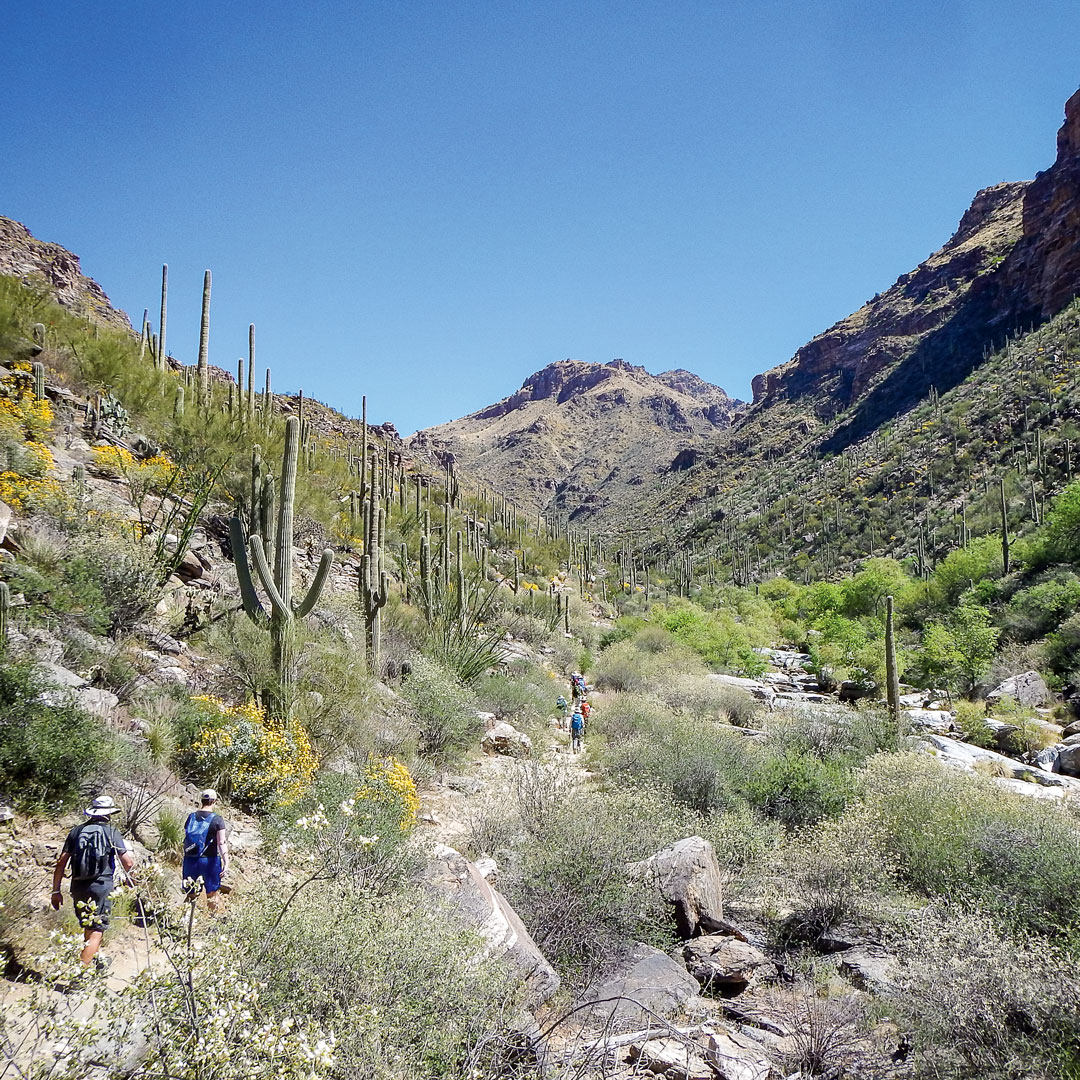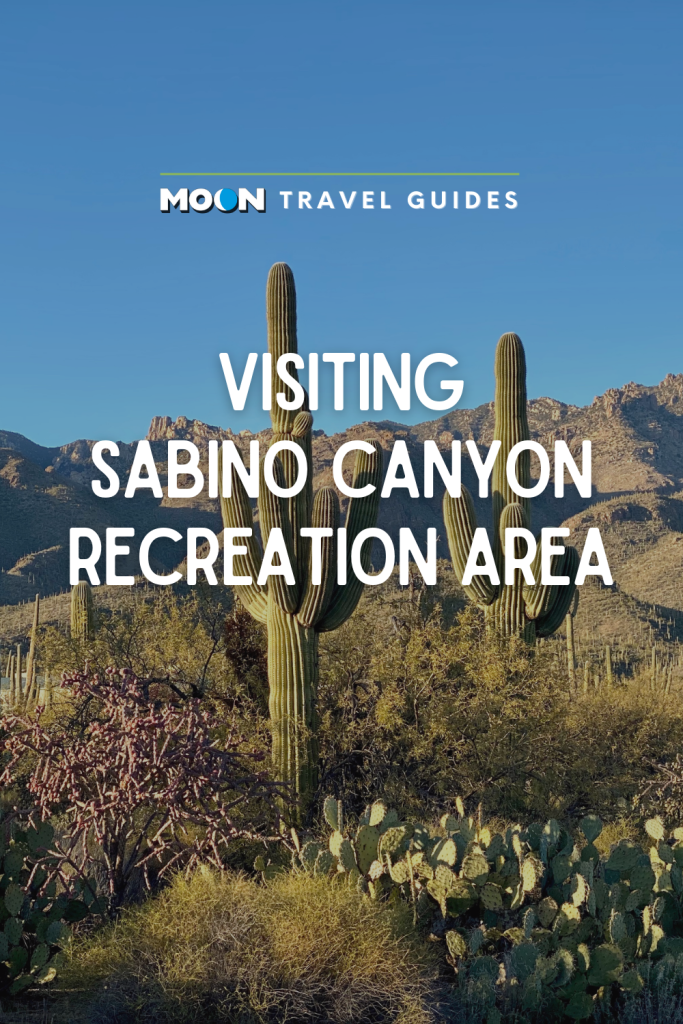Visiting Sabino Canyon Recreation Area
Sabino Creek starts as springs high up in the mountains, gathering snowmelt and run-off as it descends into the foothills. It rushes through Sabino Canyon with sometimes deadly vigor, creating a riparian oasis of cottonwood, willow, walnut, sycamore, and ash. Saguaro, barrel cactus, prickly pear, and cholla dominate the rocky canyon slopes away from the creek’s influence. It is a truly spectacular place that should not be missed.
Sabino Canyon Recreation Area, about 13 miles (20.9 km) northeast of downtown Tucson, is easily accessible, user-friendly in the extreme, and much used—best estimates say 1.25 million people visit every year. Many locals use the canyon’s trail system for daily exercise, and hikers, picnickers, and sightseers usually pack the canyon every day year-round.

A paved road rises 4 miles (6.4 km) up into the canyon, crossing the nearly always running creek in several places. During Southern Arizona’s summer and winter rainy seasons, it is nearly impossible to cross the small bridges without getting your feet wet. The Forest Service closed the road to cars in 1978. It’s a relatively easy walk along the road to the top of the canyon, which offers access to trails that go far into the Santa Catalinas. If you don’t feel like walking, the Sabino Canyon Shuttle (9am-4pm daily; $15 adults, $8 ages 3-12, free under age 2), an ecofriendly electric tram, runs 30-minute narrated trips into the canyon all day, pausing at nine stops along the way to pick up or drop hikers at various trailheads.
The Sabino Canyon Visitor Center and Bookstore (520/749-8700; 8am-4:30pm daily) has trail guides and sells gifts and books. There are restrooms, drinking fountains, and dozens of tucked-away picnic areas throughout the canyon, and many of the trails link up with one another, so it is easy to cobble together a loop hike that will take you through the various life zones. The canyon is open sunrise-sundown every day, and bikes are allowed in the canyon only before 9am and after 5pm, never on Wednesday or Saturday, and never on trails that lead into the Pusch Ridge Wilderness.
To get to the canyon from midtown, take Speedway Boulevard east until it turns into Tanque Verde Road, then turn north on Sabino Canyon Road to the recreation area, just north of Sunrise Road.
Vast open spaces, dreamy canyons, and colorful culture: experience it all with Moon Arizona & the Grand Canyon.
Newsletter Signup
By clicking ‘Sign Up,’ I acknowledge that I have read and agree to Hachette Book Group’s Privacy Policy and Terms of Use
Pin It for Later


